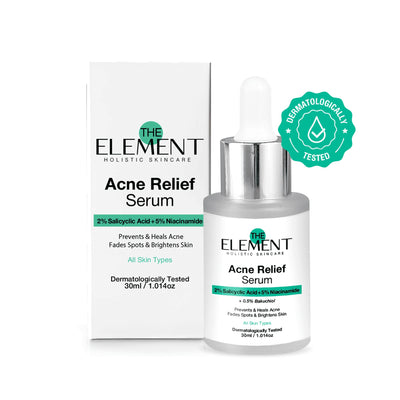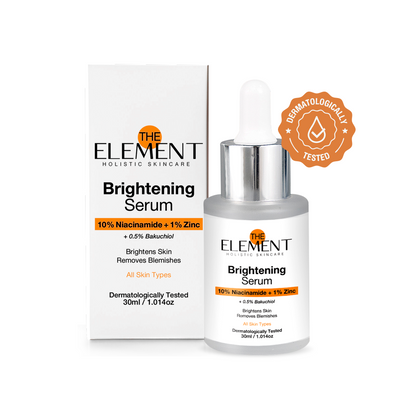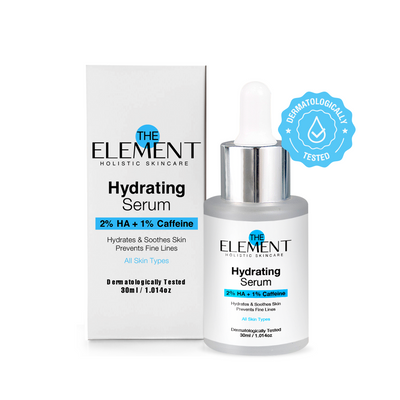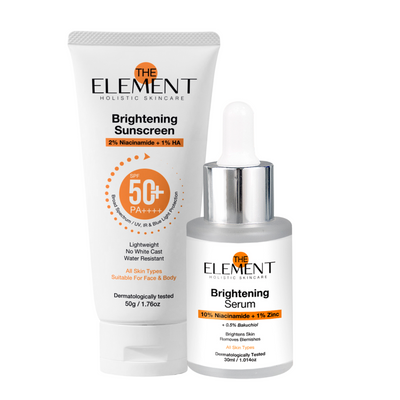Salicylic Acid and Retinol: Can You Use Them Together for Better Skin?
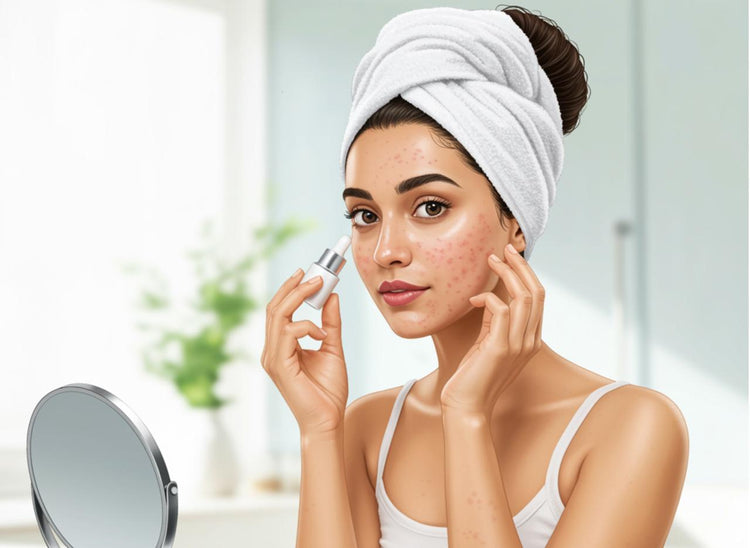
Introduction: The Power Duo in Skincare
If you’re passionate about skincare, you’ve likely heard about the transformative effects of salicylic acid and retinol. Both ingredients are celebrated for their ability to tackle acne, smooth skin texture, and fight signs of aging. But can you use salicylic acid with retinol? What’s the best way to combine them, and are there safer alternatives like bakuchiol—especially for those who are pregnant or have sensitive skin? This guide answers all your questions, offering expert-backed advice for integrating these powerhouse ingredients into your routine.
What Are Salicylic Acid and Retinol?
Salicylic Acid: The BHA for Clearer Pores
Salicylic acid is a beta hydroxy acid (BHA) known for its ability to penetrate deep into pores, exfoliate dead skin cells, and reduce inflammation. It’s a go-to ingredient for treating acne, blackheads, and oily skin.
Retinol: The Gold Standard for Anti-Aging
Retinol, a derivative of vitamin A, is renowned for its ability to accelerate cell turnover, boost collagen production, and fade hyperpigmentation. It’s widely used to address fine lines, wrinkles, and uneven skin tone.
Can You Use Salicylic Acid and Retinol Together?
Combining salicylic acid and retinol can deliver impressive results, but it requires careful planning. Both ingredients are potent exfoliants, and using them together can increase the risk of irritation, dryness, and sensitivity.
Dr. Shari Marchbein, board-certified dermatologist, explains:
"While both salicylic acid and retinol are effective, using them together can be too harsh for some skin types. It’s important to introduce them slowly and monitor your skin’s response."
Benefits of Using Salicylic Acid and Retinol
- Enhanced Acne Control: Salicylic acid clears pores, while retinol speeds up cell turnover, reducing breakouts and preventing clogged pores.
- Improved Texture and Tone: The combination helps fade acne scars, smooth rough patches, and even out skin tone.
- Anti-Aging Effects: Retinol’s collagen-boosting properties, paired with salicylic acid’s exfoliation, can minimize fine lines and wrinkles.
Challenges and Risks
- Increased Sensitivity: Both ingredients can cause dryness, redness, and peeling, especially when used together.
- Sun Sensitivity: Retinol increases your skin’s sensitivity to sunlight, making daily sunscreen essential.
How to Use Salicylic Acid and Retinol Safely
1. Alternate Days
One of the safest ways to use salicylic acid and retinol together is to alternate them. For example, use salicylic acid in the morning or on one night, and retinol on the next.
2. Layering with Caution
If you want to use both in the same routine, apply salicylic acid first, wait for it to absorb, then follow with retinol. However, this method is best for those with resilient, non-sensitive skin.
3. Buffering
Apply a gentle moisturizer between the two actives to reduce irritation.
4. Start Slow
Introduce each ingredient gradually, starting with lower concentrations and increasing as your skin builds tolerance.
5. Always Use Sunscreen
Both ingredients can make your skin more vulnerable to UV damage. Apply a broad-spectrum SPF 30 or higher every morning.
In case you are using the natural alternative of retinol "Bakuchiol", you can use them in one go.
Bakuchiol: The Natural Retinol Alternative
What Is Bakuchiol?
Bakuchiol is a plant-derived compound often called the “natural form of retinol.” It offers similar anti-aging and skin-renewing benefits without the irritation commonly associated with traditional retinol.
Why Bakuchiol Is Best for Sensitive Skin and Pregnancy
Unlike retinol, bakuchiol is safe for use during pregnancy and breastfeeding. It’s also less likely to cause redness, peeling, or sensitivity, making it ideal for those with delicate skin.
How Bakuchiol Works
Bakuchiol functions similarly to retinol at the cellular level. It stimulates collagen production, accelerates cell turnover, and helps reduce the appearance of fine lines, wrinkles, and hyperpigmentation. Unlike retinol, bakuchiol is not a vitamin A derivative, which means it doesn’t cause the same level of sensitivity or dryness.
Scientific Backing
A landmark study published in the British Journal of Dermatology found that bakuchiol is as effective as retinol in improving signs of aging and photo-damage, but with significantly less irritation. Participants using bakuchiol experienced smoother, firmer skin and a reduction in pigmentation—without the flaking or stinging often associated with retinol.
Expert Insight:
"Bakuchiol is a game-changer for those who want the benefits of retinol but have sensitive skin or are pregnant. It’s gentle, effective, and suitable for daily use," says Dr. Mona Gohara, board-certified dermatologist.
Safe for Pregnancy and Sensitive Skin
One of the most significant advantages of bakuchiol is its safety profile. Retinol and other vitamin A derivatives are not recommended during pregnancy or breastfeeding due to potential risks to the developing baby. Bakuchiol, on the other hand, is considered safe for use during pregnancy, making it an excellent choice for expectant mothers or anyone with sensitive skin.
Bakuchiol in "The Element" Serums: 0.5% for Optimal Results
All serums from "The Element" are expertly formulated with 0.5% bakuchiol—a concentration shown in clinical studies to deliver visible results while remaining gentle on the skin. This optimal percentage ensures you receive the full anti-aging and skin-brightening benefits of bakuchiol, such as:
- Smoother skin texture and reduced fine lines
- Improved firmness and elasticity
- Faded dark spots and more even skin tone
- Minimal risk of irritation, dryness, or redness
Why 0.5% Bakuchiol Is Ideal
Research indicates that 0.5% bakuchiol is both effective and well-tolerated for most skin types. This concentration strikes the perfect balance between efficacy and gentleness, making it suitable for daily use—even for those with sensitive or reactive skin.
How to Use Bakuchiol Serums
Bakuchiol serums, like those from "The Element," can be used morning and night. They pair well with other actives, including salicylic acid, and do not increase sun sensitivity, though daily sunscreen is always recommended for optimal skin health.
Ready to experience the power of bakuchiol?
Explore "The Element" serums and discover how 0.5% bakuchiol can transform your skincare routine—naturally and safely.
Conclusion: Achieve Your Best Skin—Safely
Salicylic acid and retinol are powerful tools for clearer, younger-looking skin. When used thoughtfully, they can transform your complexion. For those seeking a gentler approach, bakuchiol offers a safe, effective alternative—especially during pregnancy. Always consult with a dermatologist to tailor your routine to your unique needs.
Ready to upgrade your skincare routine? Explore products with salicylic acid, retinol, or bakuchiol, and enjoy the journey to healthier, more radiant skin!
Frequently Asked Questions (FAQ)
Q1: Can I use salicylic acid and retinol together?
A1: Yes, but it’s best to alternate them or use with caution to avoid irritation. If you are using Bakuchiol, use can use together.
Q2: Should I apply retinol after salicylic acid?
A2: You can, but allow salicylic acid to absorb fully before applying retinol, and monitor your skin’s response.
Q3: Is bakuchiol as effective as retinol?
A3: Bakuchiol offers similar benefits to retinol with less irritation and is safe during pregnancy.
Q4: What should I avoid when using salicylic acid and retinol?
A4: Avoid using other strong actives (like AHAs or benzoyl peroxide) in the same routine to minimize irritation.
Q5: Is it safe to use these ingredients during pregnancy?
A5: Retinol is not recommended during pregnancy, but bakuchiol is considered a safe alternative.

